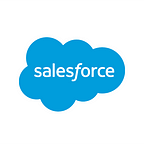The Generational Shift: How to Adapt Your Sales Organization
Warren Shiver, Founder and Managing Partner, Symmetrics Group
By 2025 Millennials will represent 75% of the workforce. This shift affects sales teams in many ways — from the way that buyers evaluate their options and make decisions, to the role of the sales professional within the organization and in the field.
We researched 100 companies and sales teams in an effort to understand what they are doing to adapt and capitalize on these demographic changes. Let’s examine what some of their highest priority areas are:
1. Adjusting to the Changing Buyer
In certain industries, Millennials are moving into positions of “buying” authority. Our research shows that Millennials leverage digital sources and peer input significantly more than advice from a sales professional when making a purchasing decision. Organizations are moving away from bureaucratic and hierarchical decision-making processes in lieu of an approach that is more inclusive and collaborative. Are your sales and marketing teams equipping your organization to effectively market and sell in this new decision landscape?
2. Rethinking the Structure of the Sales Organization
For most companies, maintaining a blend of inside and field-based sales teams allows them to balance the overall cost of sales with sales effectiveness. We had the opportunity to speak with a Fortune 100 enterprise technology firm. The company had recently launched a new sales team which focused on combining digital marketing, social selling, and traditional inside sales methods to target a new segment of buyers. The team leader told us, “If Millennials are doing 80% of their research prior to ever talking to someone, we need to get in front of them and become more top of mind with things like digital ads, keywords, banners — all to assist with the buyer’s journey.” Is your sales model optimized to win in this changing buying environment?
To read the complete article, The Generational Shift: How to Adapt Your Sales Organization, visit Quotable.com.
